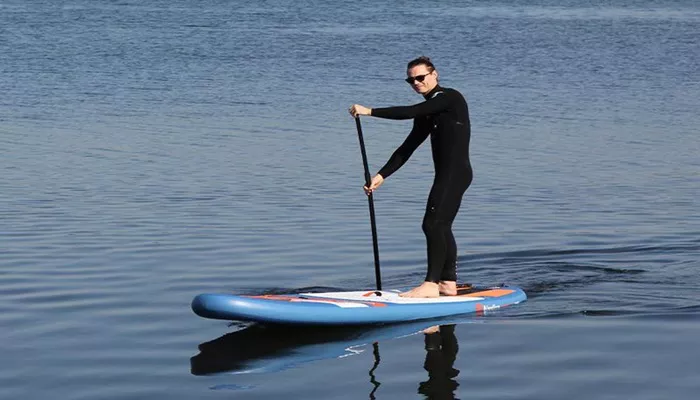Paddling is the heartbeat of surfing. Without efficient paddling, catching waves becomes a battle. It affects positioning, timing, and overall performance. Whether you are part of the Surfing Beginners community or an advanced rider, understanding proper paddling fundamentals is vital. In this article, we explore techniques, posture tips, endurance building, and mistakes to avoid to help you perfect your paddling skills.
Why Proper Paddling Is Crucial in Surfing
Wave Positioning
Paddling properly helps surfers move swiftly to the peak, where waves break with the most power. Poor paddling results in missed opportunities and exhaustion.
Energy Conservation
Surfing demands stamina. Efficient paddling techniques allow surfers to conserve energy for the critical moments of take-off and ride.
Increased Wave Count
Surfers who master paddling catch more waves. Better positioning and quick reaction time lead to more rides and faster skill progression.
Essential Body Position When Paddling
Find the Sweet Spot on the Board
Lying too far back drags the board. Too far forward, and the nose sinks. Find the balance point where the board glides flatly across the water.
Maintain a Streamlined Posture
Keep your body tight and centered. Legs should stay close together, toes lightly touching. Arch your back slightly, lifting your chest without straining.
Head Positioning
Eyes should gaze forward. Avoid looking down. Keeping your head up improves balance, awareness, and paddling efficiency.
Hand Placement and Stroke Mechanics
High Elbow Technique
During each stroke, enter the water with fingers first, elbow high. This technique generates more propulsion with less effort.
Deep, Powerful Strokes
Reach forward fully. Pull your hand deep through the water, past your chest, and exit smoothly. Shallow paddling wastes energy and slows momentum.
Alternate Rhythmically
Stroke with one arm while the other recovers. Avoid paddling with both arms simultaneously unless sprinting for a wave takeoff.
Breathing and Endurance Building
Breathing Techniques
Coordinate strokes with breathing. Maintain steady, controlled breaths. Avoid short, shallow breathing that increases fatigue.
Endurance Drills
Practice long-distance paddling sessions. Swim laps, use resistance paddles, or perform open-water drills to build stamina specifically for surfing demands.
Tips for Paddling Through Different Conditions
Calm Waters
Use a relaxed, efficient pace. Focus on form and maintaining steady speed towards the lineup.
Choppy or Windy Waters
Shorten your strokes slightly. Increase tempo to keep momentum against the turbulence. Stay low to minimize wind drag.
Duck Diving and Turtle Rolls
Approaching broken waves? Execute a duck dive (shortboard) or turtle roll (longboard) to maintain positioning without losing ground.
Common Paddling Mistakes and How to Fix Them
Dragging Feet
Keep legs raised just below the water’s surface. Dragging feet create resistance and slow your paddling speed.
Wasted Arm Movement
Focus on pulling water efficiently. Flailing arms side-to-side decreases forward momentum and drains energy.
Over-Arching the Back
While arching is necessary, over-arching leads to quick fatigue. Find a comfortable lift that engages your core muscles.
Advanced Paddling Techniques
Explosive Sprint Paddling
When chasing a fast-breaking wave, execute quick, powerful strokes with increased turnover. Sprint paddling demands short bursts of high energy.
Positioning Adjustment Strokes
Subtle strokes using just the hands help fine-tune your position in the lineup without excessive movement.
Wave Matching
Adjust your paddling pace to match the approaching wave’s speed. Synchronization is key to successful takeoffs.
Training Exercises to Improve Paddling
Dry Land Paddling Practice
Use an exercise ball or swim bench to simulate paddling posture and build shoulder and core strength.
Resistance Band Workouts
Perform paddling motions using resistance bands. Focus on strengthening back, shoulder, and tricep muscles vital for powerful strokes.
Pool Paddling Sessions
Practice controlled paddling laps in a pool, focusing on stroke efficiency, breathing, and endurance improvement.
How to Progress Faster as a Surfing Beginner
For Surfing Beginners, mastering paddling is step one toward surf success. Prioritize consistency. Spend more time paddling in real ocean conditions. Seek feedback from instructors. Video analysis can help highlight posture flaws and stroke inefficiencies quickly.
Choosing the Right Board for Easier Paddling
Volume and Surface Area
More volume equals easier paddling. Larger boards float better, enabling better gliding and less effort needed to catch waves.
Board Shape Matters
Wider, thicker boards offer better stability and paddling ease. Surfboards designed for beginners often prioritize ease of paddling and early wave entry.
Checklist for Proper Paddling Form
- Body centered and balanced
- Legs together, toes pointed
- Chest slightly lifted
- Eyes forward, head up
- High elbow during stroke
- Deep and long pulling motion
- Relaxed breathing
- Consistent, smooth rhythm
Conclusion
Paddling forms the foundation of surfing mastery. Perfecting this essential skill separates casual surfers from true wave riders. Focus on proper technique, posture, and breathing. Avoid common mistakes. Train on land and water regularly.
Whether you’re stepping into the ocean for the first time with Surfing Beginners or aiming to elevate your performance, efficient paddling opens the door to a lifetime of surfing joy.

